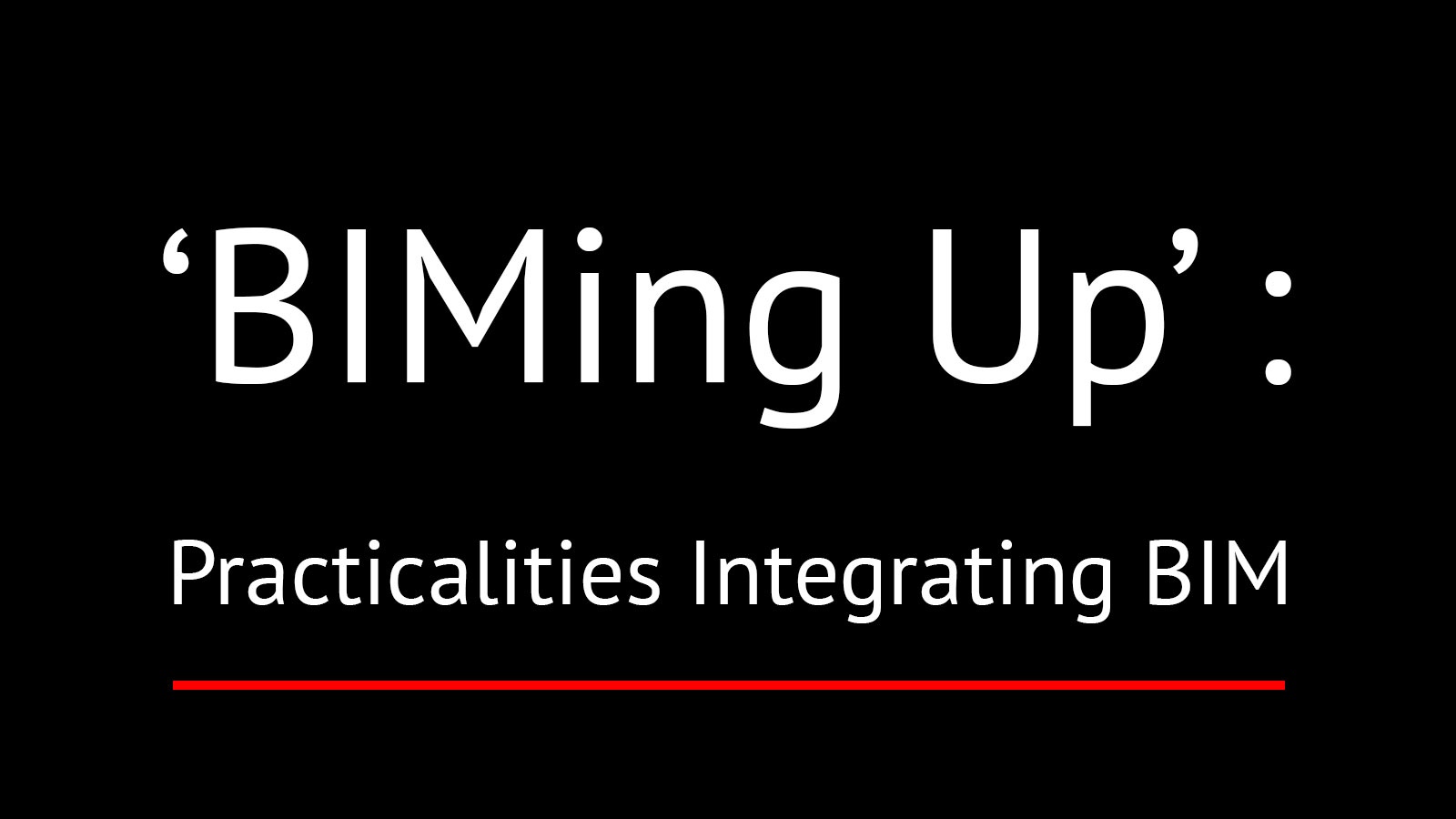We hosted a Webinar last week in partnership with Building Magazine - 'BIMing Up' Practicalities Integrating BIM. This was the second in a series of four and if you didn’t manage to attend then be sure to look out for the next two early next year. Watch this space for further details on that. The first two sessions are also saved online as recordings you can watch anytime -
I was blown away by the attendance levels (more than 2,000 registered), clearly showing that BIM is a very hot topic in our industry. There were some really great questions from the audience, sadly we did not have the chance to answer them all, so I decided to answer some of them here. Hopefully this will further the discussion on this very important evolution of how we design, build and operate our assets in this new BIM world (or not so NEW, some of us have been doing it for years ;)
So, here we go:
Q. Practitioners have always used different software (CAD, project management tools, etc.). How realistic is it that full (level 3) integration of information will be achieved between all members of the construction team across the industry? How long might it take to achieve this?
A. There are a plethora of different products, systems and tools out there that need to talk to one another to achieve Level 3 - it really depends on how far you want/need to take it. Your organisation’s business model, its processes and its capabilities will define this. At Asite we have been integrating with both internal (inside the firewall) and external systems (outside the firewall) (CAD, ERP, SCM etc..) for the past 10 years in 2D and 3D environments and most recently in the 4th and 5th Dimensions. We do this with our collaborative Building Information Model cloud - cBIM. Through our relationships with the likes of Autodesk, Microsoft, SAP, and OpSource to name a few, we have been enabling our users throughout the supply chain to interact with this data from our Cloud - no matter what systems they use. We work closely with BuildingSmart and the IFC schema to enable this interoperability. This is all happening today, you just need to become a part of it.
Q. What is the prospect of subscription based software licensing making more complex BIM software available to smaller consultancies?
A. This is a great question and one I hear all too often as a statement - "This is too expensive for smaller consultancies" or "my project is too small to warrant BIM", a perfectly logical train of thought in both cases. The reality is that it is not too expensive to get started and it should be used on projects of all sizes, sooner rather than later. First of all you need to choose the applications that suit your business model, methodologies, processes and capabilities - then you can decide how to get involved and at what price level. With cBIM you can take data in from any other CAD packages that support IFC and interact with that data for your business needs. As cBIM is subscription based you don’t need every user in your organisation or supply chain to require CAD licenses. They may just need to view the model on-line for Comments, Red-Lining and collaboration purposes or they may need to extract data for other uses such as cost estimating or procurement purposes. For all of these actions and many, many more, they just require a low level subscription to our cBIM service, with the requirement for BIM Authoring/CAD, ERP, CRM and many other unnecessary licenses being taken out of the budget/cost. Of course as you grow as a BIM shop – depending on your discipline, you may require more BIM Authoring licenses for instance - at which point your innovation in BIM will be paying dividends.
Q. What are the benefits to building product suppliers?
A. If building product suppliers can get on board early enough in the BIM design process, they can get clear visibility of what products the design teams are using at spec phase and get their product families built straight into the construction design. This is clearly advantageous from a planning perspective and stock control as an example. From a procurement perspective, you can buy product straight out of the model file. You bring this all the way through to FM and you have the holy grail - FM operations now have all of the building supplies as part of the model file to maintain, operate and procure, for the future of that asset. Imagine being able to fly through the model, click on an air-con unit - then see who specified it, supplied it, fitted it and oh by the way click the basket to procure a new one? And that’s just the tip of the iceberg!
Q. How does BIM record who changed what and when in the model? (Legal issues, Management, contract)?
A. It is not BIM that records the audit trail across a design team – it is the collaborative BIM platform. In Asite cBIM each and every action is fully audited, who did what, why, where etc. We as an industry have been doing this for years in the 2D space with basic project extranet solutions - the 3D world is no different - we just need to get more co-ordinated on the technical capabilities, through interoperability. The full audit trail doesn’t change – that is why collaboration matters.
Q. We speak about collaboration. Is the current Master BIM version a live platform? or is it just various model that is updated by a BIM manager?
A. This is very clear in my mind - without collaboration you are simply dealing with what we call the Selfish BIM. That is various BIM's (usually with each stakeholder on a project keeping their own autonomous BIM) not being kept up to date by other versions of that BIM and certainly no audit being kept in place. Through the use of cBIM you have one central secure Master BIM (as you call it). As participants begin to interact with it and use it to update in their own environments, new revisions and versions will be added to the Master. The Master will always hold the most up to date information, together with a very powerful audit trail. So without collaboration (just like we have been doing for ever in the 2D world) you are not realising the full potential of BIM. At Asite we have an intelligent robot called Adoddle that co-ordinates and synchronises your model files for this purpose.
I said in my closing remark at the Webinar - that it is important to get started, however size of bite you want to start off with. It will make your firm an innovator and differentiate you from your competitors. Remember BIM is a number of practices, methodologies and technologies that you must integrate into your business - so you can get started with very little or no cost. The fact of the matter is: if you want to make BIM a reality for your firm - you need to get started somewhere.



